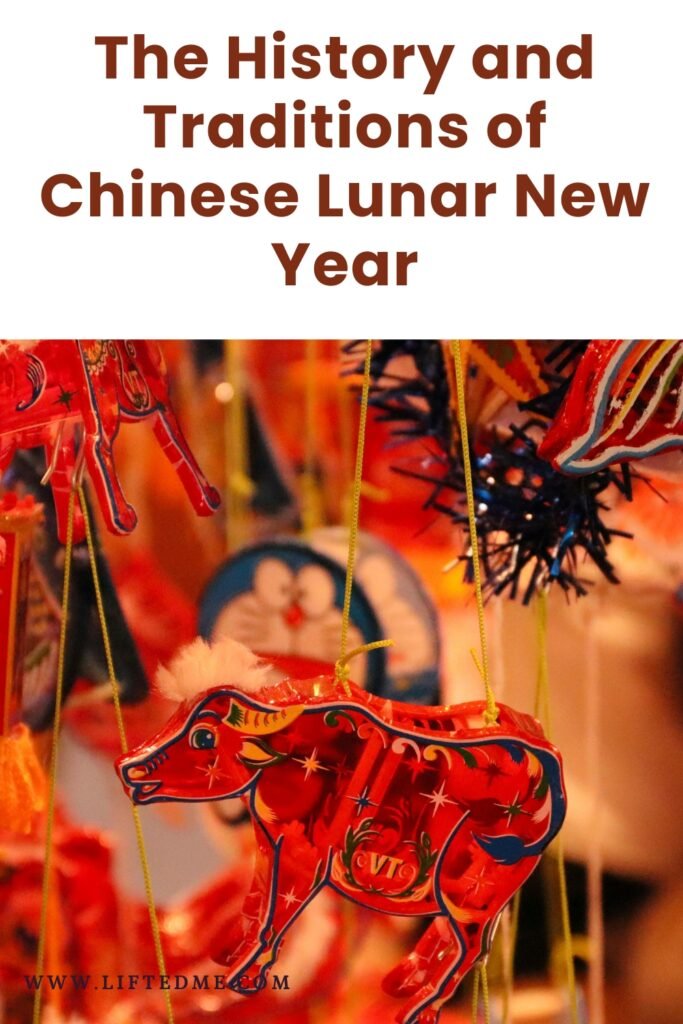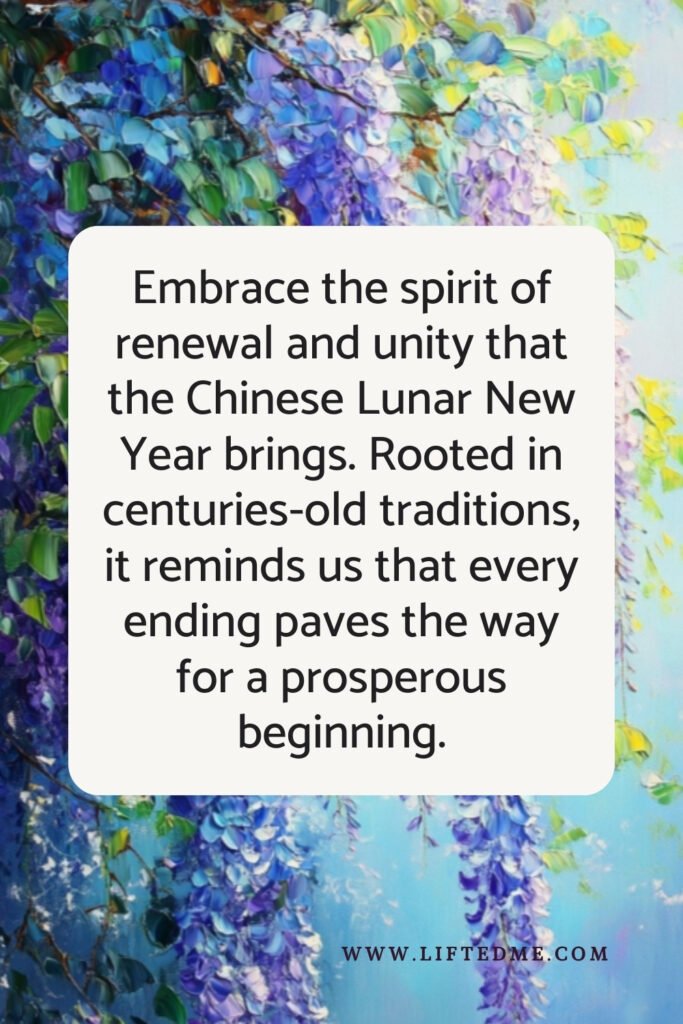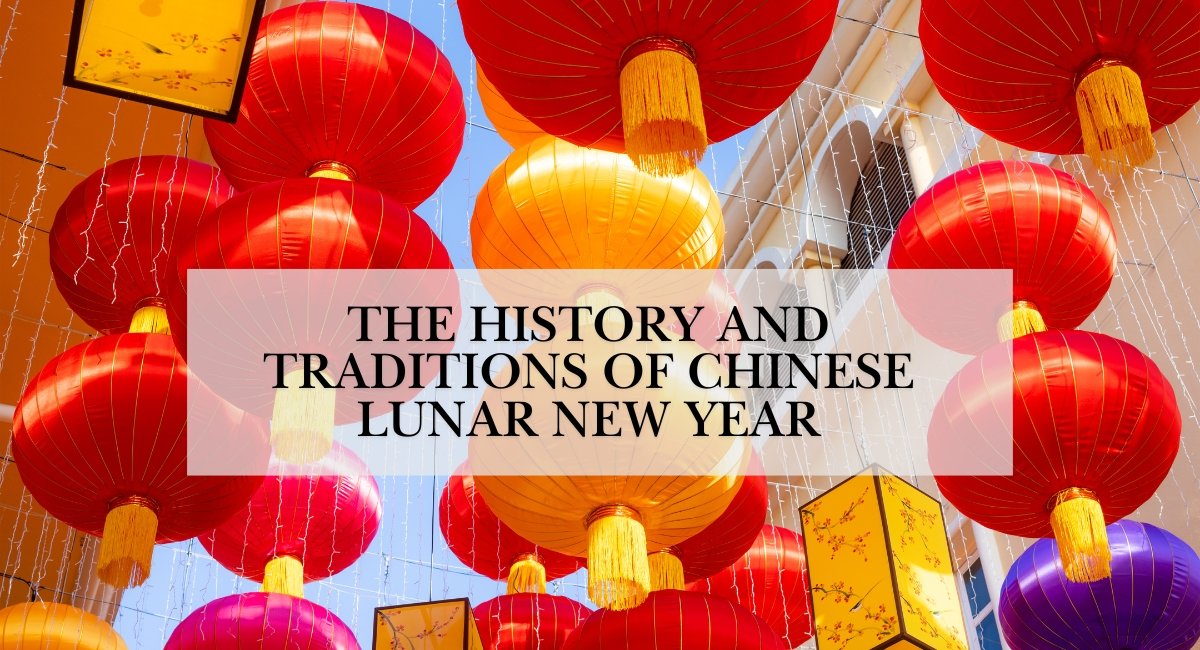The History and Traditions of Chinese Lunar New Year
This post contains paid and/or affiliate links. I make a small commission at no extra cost to you. Please see our Privacy Policy.
The Chinese Lunar New Year, also known as the Spring Festival, is more than a celebration. It’s a tapestry of traditions that are deeply meaningful to millions worldwide.
Each custom has its own significance, showing the values, beliefs, and history of Chinese culture. Let’s dive into some key traditions and their importance in the festivities.
Family Reunions
Family reunions on New Year’s Eve are a cherished tradition. Families come together from far and wide for a meal. This meal is filled with dishes that symbolize wealth, happiness, and longevity.
- Dumplings (Jiaozi): Shaped like ancient silver or gold ingots, they symbolize wealth.
- Fish (Yú): This is served whole as it represents abundance and prosperity.
- Noodles: Serving long noodles symbolizes longevity and good health.
This reunion marks the start of a new year and strengthens family bonds.
Red Envelopes
Red envelopes, known as hongbao, are another key tradition. These envelopes contain money and are given from the elderly to the young. The color red is significant, believed to ward off evil spirits and bring good luck.
- The amount of money given is not as critical as the act itself; it is often chosen to be an even number, as odd numbers are associated with funerals.
- It’s common to write a blessing on the envelope, further enriching the spirit of giving and well-wishing.
Receiving a red envelope is not just about the money. It symbolizes blessings, good fortune, and hopes for a prosperous new year.

Cleaning and Decorating the Home
Before the festivities start, homes are thoroughly cleaned. This act symbolizes the removal of bad luck and misfortunes. Homeowners avoid sweeping on New Year’s Day to keep the good luck in.
Decorating the house with festive decorations is also important. Here are some popular decorations:
- Red Lanterns: These represent a wish for prosperity and good fortune.
- Couplets: Chinese couplets, often written on red paper, feature auspicious messages that celebrate the new year.
- Papercuts: These delicate artworks symbolize happiness and good luck.
These preparations create a warm environment for celebrating and inviting good fortune.
Fireworks and Lion Dances
Fireworks are a big part of the Lunar New Year celebrations worldwide. They are believed to scare away evil spirits and bring good luck. Lion dances are also performed during the celebrations. These dances feature performers in elaborate costumes and are a spectacle to see:
- Lion dances add a festive atmosphere and symbolize the arrival of good fortune.
- The performance is often accompanied by energizing music, creating a vibrant display of culture.
The sounds of fireworks and the lion dances reinforce the intention of safeguarding one’s home and family during the new year.
Meaning Beyond Celebrations
All these traditions during the Chinese Lunar New Year serve a purpose. They are not just festivities; they embody cultural beliefs, foster unity, and preserve historical values.
The New Year’s events remind us of the past while also looking forward to the future. Families strengthen connections, uphold heritage, and spread joy by participating in these traditions.
Understanding these practices helps us appreciate the depth of the Chinese Lunar New Year celebrations. It’s a harmonious blend of history, culture, and hope, reflecting a world where past and future coexist gracefully.
Whether you are celebrating as part of the culture or simply observing, these traditions add vibrancy and meaning to this extraordinary occasion.

Cultural Symbols and Their Meanings During the Lunar New Year Festivities
The Lunar New Year is a vibrant celebration filled with rich cultural symbols that hold deep meanings. Each symbol reflects the values, hopes, and traditions of the families and communities that celebrate this significant festival. Understanding these symbols can enhance your appreciation of the festivities.
Red Envelopes (Hongbao)
The red envelope, or “hongbao,” is a key symbol of the Lunar New Year. It’s filled with money for children and unmarried adults. The red color means happiness and good luck.
Decorations
Homes and streets are decorated with red items, lanterns, and couplets. These decorations have special meanings:
- Lanterns: They symbolize the past and future, driving away bad spirits and welcoming prosperity.
- Couplets: These verses wish for happiness, wealth, and longevity in the new year.
- Paper Cuts: They show good fortune and family unity, hung in windows and doors.
Food and Their Significance
Food in the Lunar New Year is more than just food. Each dish has a special meaning:
| Food Item | Symbolism |
|---|---|
| Dumplings (Jiaozi) | Wealth and prosperity, shaped like ancient Chinese gold ingots. |
| Noodles | Longevity and a long life; they are typically served uncut. |
| Fish (Yú) | Abundance and surplus, as the word for fish sounds like the word for ‘surplus’. |
Dragon and Lion Dances
The dragon and lion dances are exciting symbols of the festivities. They bring good luck and chase away evil spirits. The dragon stands for strength and auspiciousness, while the lion represents courage and protection.
Family Reunions and Ancestral Worship
The Lunar New Year is a time for family gatherings and honoring ancestors. Families celebrate and remember their ancestors. This strengthens family bonds and keeps traditions alive.
Zodiac Symbols
Each year is linked to a zodiac animal, like the Rat, Ox, or Tiger. These animals represent different traits. People believe these traits influence the year ahead.

Firecrackers and Fireworks
Firecrackers and fireworks are key to the celebration. They ward off evil spirits and mark the new year’s arrival. Neighborhoods come alive with color and sound, creating a memorable atmosphere.
The Lunar New Year’s symbols and meanings show a rich tapestry of beliefs and traditions.
As you join in the celebrations, understanding these symbols deepens your connection to the festivities and the new year’s spirit. Embrace the joy, good fortune, and unity this holiday brings!
Conclusion
The Chinese Lunar New Year’s traditions and symbols are deep expressions of values and hopes. These rituals strengthen family bonds, bring good fortune, and honor ancestors.
Each custom, from cleaning the house to family gatherings, shows respect for heritage and optimism for the future.
Cultural symbols are essential in these celebrations. The color red, symbolizing happiness and prosperity, is everywhere.
Decorations, foods, and even clothing carry meanings of abundance and togetherness. Dishes like dumplings and fish symbolize wealth and surplus.
Learning about the Chinese Lunar New Year’s traditions and symbols deepens our appreciation for this special time. It’s a season filled with hope, renewal, and joy. It invites us to join in customs that celebrate the past and look forward to the future.
Whether you celebrate this festival or want to learn about it, embracing these traditions is rewarding. It helps us feel connected to others and value cultural diversity.
This experience enriches our understanding of the world and its many traditions.



